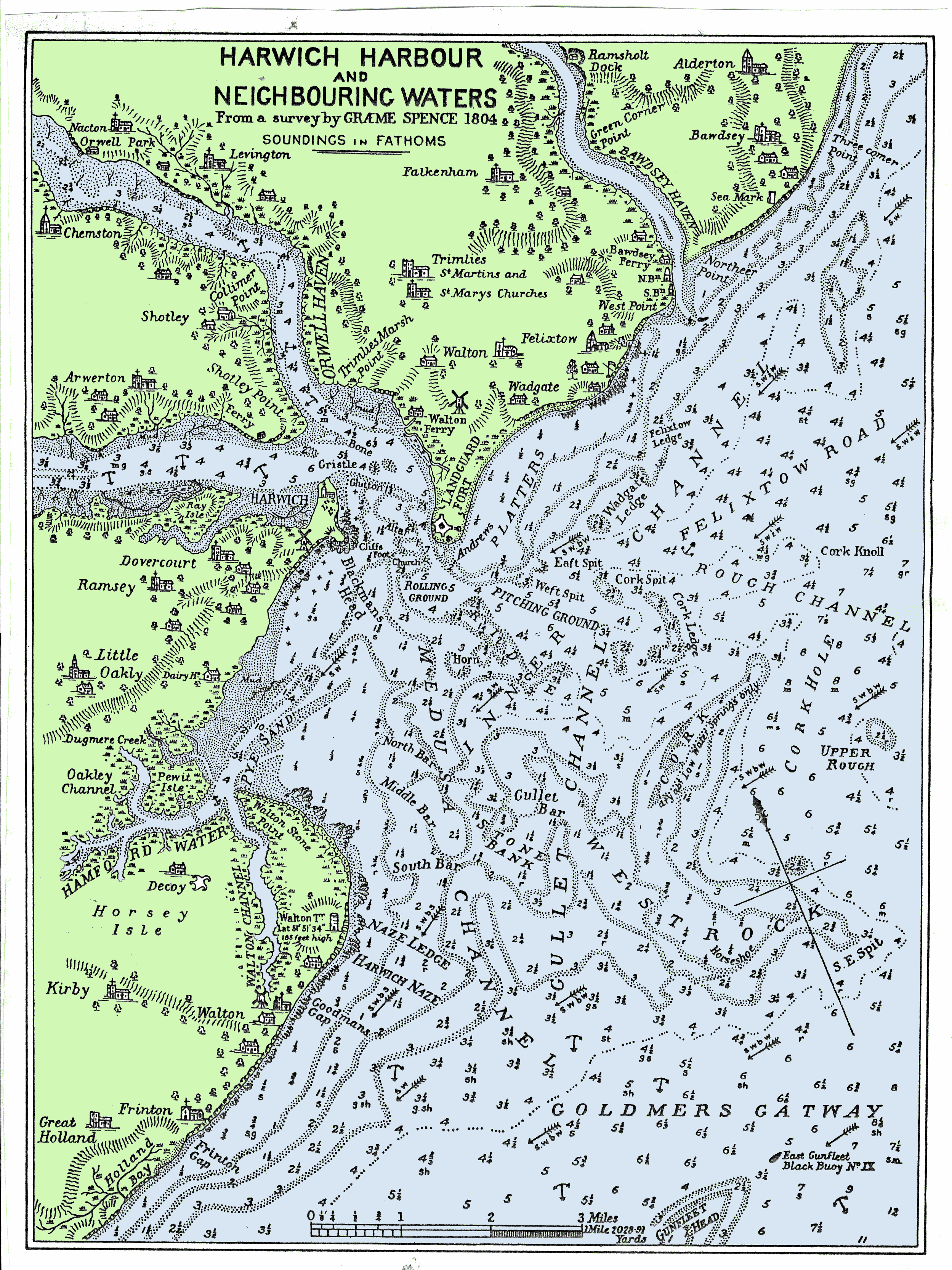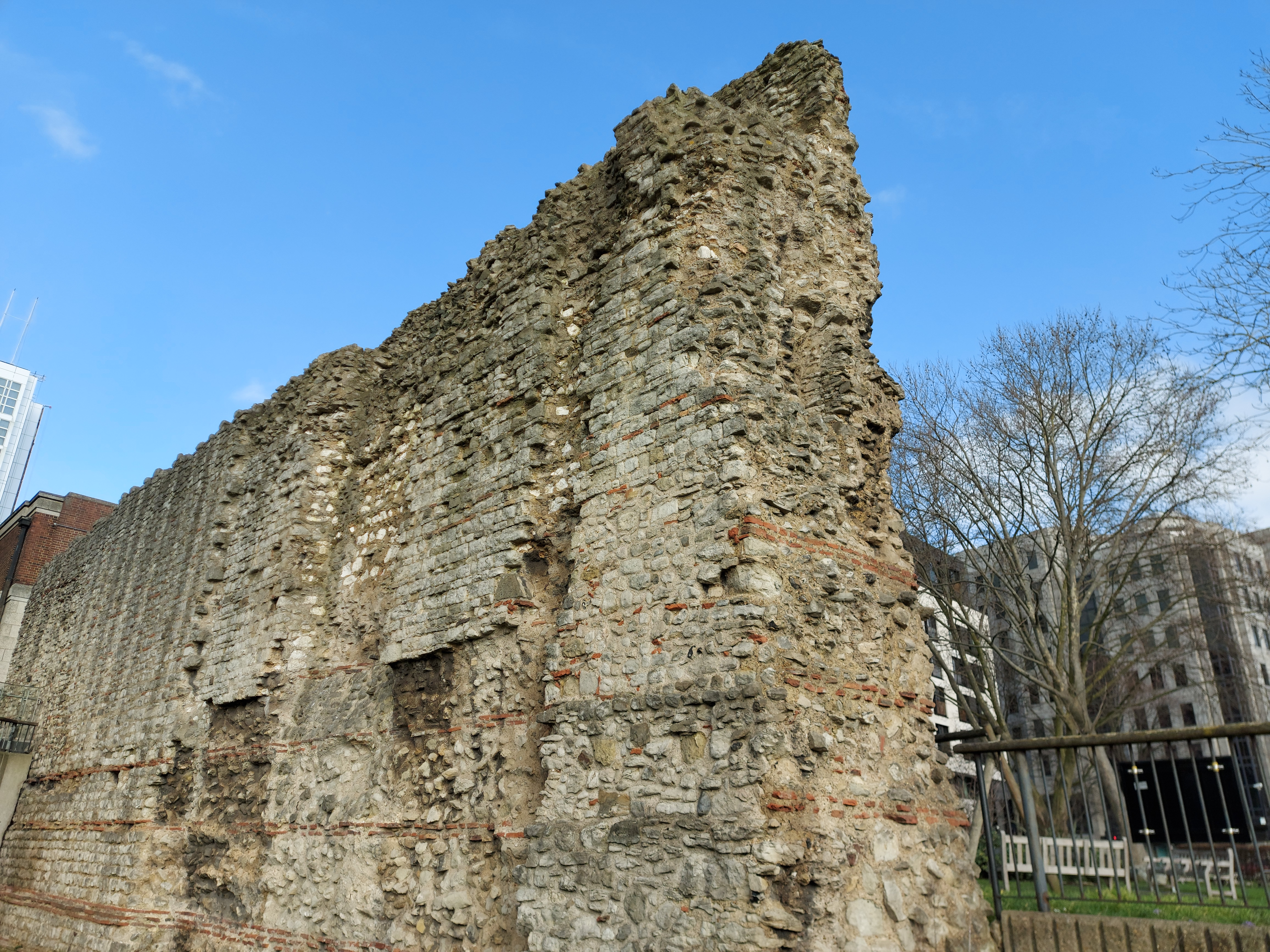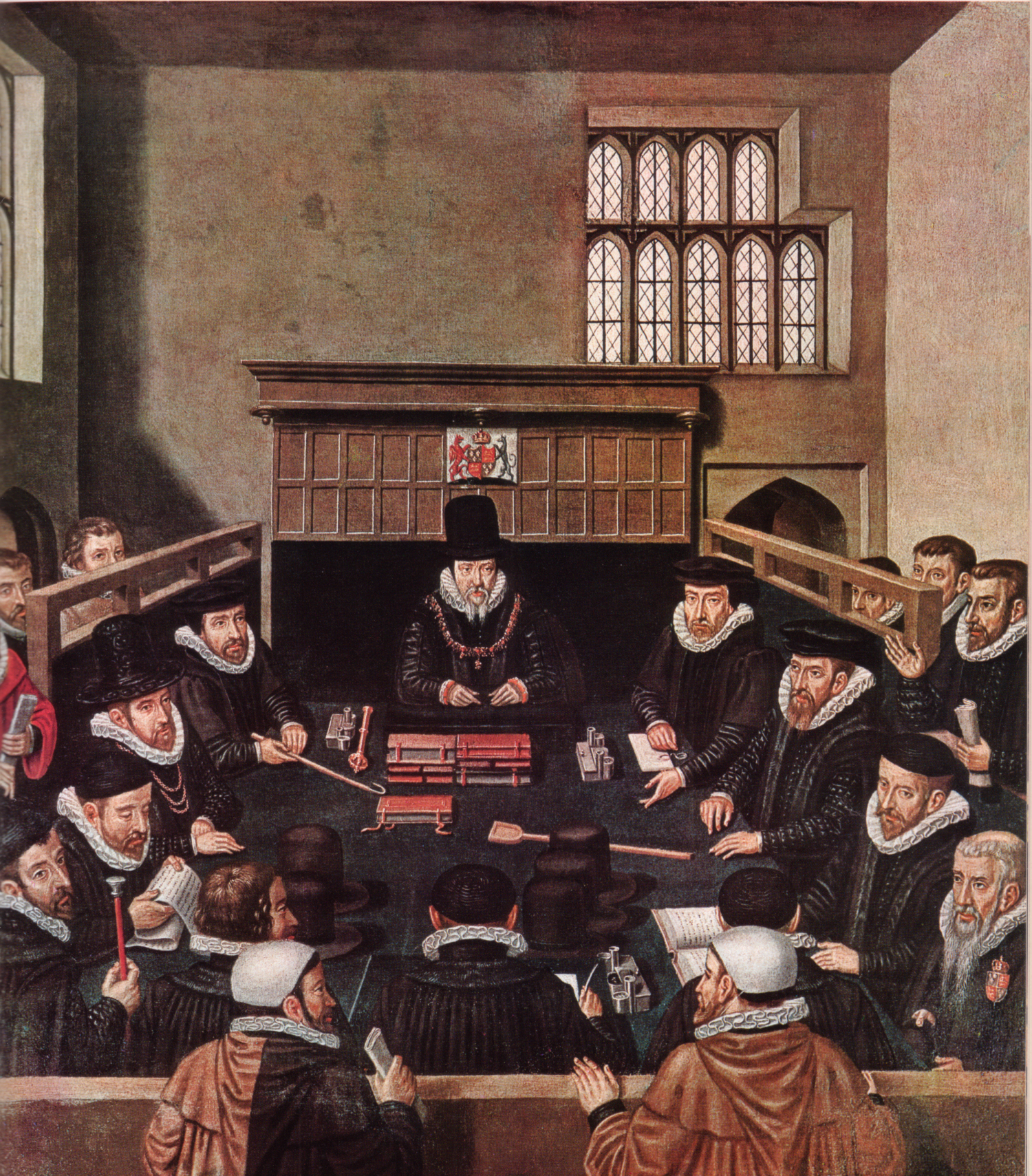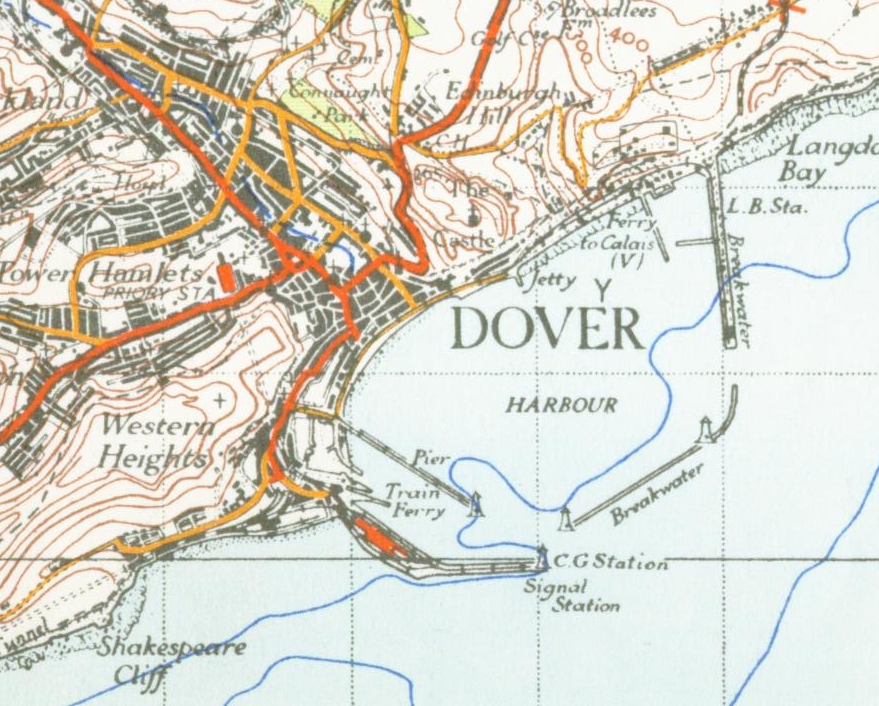|
Ridolfi Plot
The Ridolfi plot was a Catholic plot in 1571 to overthrow Queen Elizabeth I of England and replace her with Mary, Queen of Scots. The plot was hatched and planned by Roberto Ridolfi, an international banker who was able to travel between Brussels, Rome and Madrid to gather support without attracting too much suspicion. Background Thomas Howard, 4th Duke of Norfolk, a Roman Catholic with a Protestant education, a second cousin of Queen Elizabeth's and the wealthiest landowner in the country, had been proposed as a possible husband for Mary since her imprisonment in 1568. This suited Norfolk, who had ambitions and felt Elizabeth persistently undervalued him. In pursuit of his goals, he agreed to support the Northern Rebellion, though he quickly lost his nerve. Norfolk was imprisoned in the Tower of London for nine months and only freed under house arrest when he confessed all and begged for mercy. Pope Pius V, in his 1570 papal bull '' Regnans in Excelsis'', excommunicated the P ... [...More Info...] [...Related Items...] OR: [Wikipedia] [Google] [Baidu] |
Philip II Of Spain
Philip II (21 May 152713 September 1598), sometimes known in Spain as Philip the Prudent (), was King of Spain from 1556, King of Portugal from 1580, and King of Naples and List of Sicilian monarchs, Sicily from 1554 until his death in 1598. He was also ''jure uxoris'' King of England and List of Irish monarchs, Ireland from Wedding of Mary I of England and Philip of Spain, his marriage to Queen Mary I in 1554 until her death in 1558. Further, he was Duke of Milan from 1540. From 1555, he was Lord of the Seventeen Provinces of the Habsburg Netherlands, Netherlands. The son of Emperor Charles V and Isabella of Portugal, Holy Roman Empress, Isabella of Portugal, Philip inherited his father's Spanish Empire in 1556, and succeeded to the Kingdom of Portugal, Portuguese throne in 1580 following a dynastic crisis. The Spanish conquests Spanish conquest of the Inca Empire, of the Inca Empire and of the Philippines, named in his honor by Ruy López de Villalobos, were completed during h ... [...More Info...] [...Related Items...] OR: [Wikipedia] [Google] [Baidu] |
Harwich
Harwich is a town in Essex, England, and one of the Haven ports on the North Sea coast. It is in the Tendring district. Nearby places include Felixstowe to the north-east, Ipswich to the north-west, Colchester to the south-west and Clacton-on-Sea to the south. It is the northernmost coastal town in Essex. Its position on the estuaries of the Stour and Orwell rivers, with its usefulness to mariners as the only safe anchorage between the Thames and the Humber, led to a long period of civil and military maritime significance. The town became a naval base in 1657 and was heavily fortified, with Harwich Redoubt, Beacon Hill Battery, and Bath Side Battery. Harwich is the likely launch point of the ''Mayflower'', which carried English Puritans to North America, and is the presumed birthplace of ''Mayflower'' captain Christopher Jones. Harwich today is contiguous with Dovercourt and the two, along with Parkeston, are often referred to collectively as ''Harwich''. History ... [...More Info...] [...Related Items...] OR: [Wikipedia] [Google] [Baidu] |
Tower Hill
Tower Hill is the area surrounding the Tower of London in the London Borough of Tower Hamlets. It is infamous for the public execution of high status prisoners from the late 14th to the mid 18th century. The execution site on the higher ground north-west of the Tower of London moat is now occupied by Trinity Square Gardens. Tower Hill rises from the north bank of the River Thames to reach a maximum height of 14.5 metres (48 ft) Ordnance Datum. The land was historically part of the Liberties of the Tower of London, an area the Tower authorities controlled to keep clear of any development which would reduce the defensibility of the Tower. Building has encroached to a degree, but a legacy of this control is that much of the hill is still open. The hill includes land on either side of the London Wall, a large remnant of which is visible. Definition Generally speaking, the name Tower Hill informally applies to those parts of the Liberties of the Tower of London, Towe ... [...More Info...] [...Related Items...] OR: [Wikipedia] [Google] [Baidu] |
Secretary Of State (England)
In the Kingdom of England, the title of Secretary of State came into being near the end of the reign of Elizabeth I, the usual title before that having been King's Clerk, King's Secretary, or Principal Secretary. From the time of Henry VIII, there were usually two secretaries of state. After the restoration of the monarchy of 1660, the two posts were specifically designated as the Secretary of State for the Northern Department and the Secretary of State for the Southern Department. Both dealt with home affairs and they divided foreign affairs between them. History The medieval kings of England had a clerical servant, at first known as their ''Clerk'', later as their ''Secretary''. The primary duty of this office was carrying on the monarch's official correspondence, but in varying degrees the holder also advised the Crown, and by the early fourteenth century, the position was in effect the third most powerful office of state in England, ranking after the Lord Chancellor. ... [...More Info...] [...Related Items...] OR: [Wikipedia] [Google] [Baidu] |
William Cecil, 1st Baron Burghley
William Cecil, 1st Baron Burghley (13 September 15204 August 1598), was an English statesman, the chief adviser of Elizabeth I, Queen Elizabeth I for most of her reign, twice Secretary of State (England), Secretary of State (1550–1553 and 1558–1572) and Lord High Treasurer from 1572. In his description in the Encyclopædia Britannica Eleventh Edition, ''Encyclopædia Britannica'' Eleventh Edition, Albert Pollard, A.F. Pollard wrote, "From 1558 for forty years the biography of Cecil is almost indistinguishable from that of Elizabeth and from the history of England." Cecil set as the main goal of English policy the creation of a united and Protestant British Isles. His methods were to complete the control of Ireland, and to forge an alliance with Scotland. Protection from invasion required a powerful Royal Navy. While he was not fully successful, his successors agreed with his goals. In 1587, Cecil persuaded the Queen to order the Execution of Mary, Queen of Scots, executio ... [...More Info...] [...Related Items...] OR: [Wikipedia] [Google] [Baidu] |
Shrewsbury Drapers Company
The Shrewsbury Drapers Company was a trade organisation founded in 1462 in the town of Shrewsbury, Shropshire, England. The members were wholesale dealers in wool and later woollen cloth. The Company dominated the trade in Welsh cloth and in 1566 was given a regional monopoly in the Welsh Wool trade. In the seventeenth century the trade had difficulties particularly during the English Civil war and then further declined in the eighteenth century with the industrialisation of cloth production and the improvement of transport infrastructure. This made it practical for merchants from Liverpool and elsewhere to travel into Wales and purchase cloth directly from the producers. The Reform Acts of the early nineteenth century took away the power of the trade guilds and the trade ceased. Since that time the Shrewsbury Drapers Company has survived and continues as a charity that runs almshouses in Shrewsbury. ''Please note'' ''The image shown in the infobox on the right is not Drapers ... [...More Info...] [...Related Items...] OR: [Wikipedia] [Google] [Baidu] |
William Herle (spy)
William Herle (died 1589) was an Englishman who was both a Member of Parliament and the county sheriff; he was also a privateer and spy while imprisoned in the Marshalsea prison in 1571. He became known for his part in Elizabeth I's intelligence network inside the jail. He smuggled letters from William Cecil and Lord Burghley about people involved in the so-called Ridolfi plot, which was a Roman Catholic plan to assassinate the Queen and replace her with Mary, Queen of Scots. Privateering Herle was hired by Sir William Garrard in 1565. Garrard was the Lord Mayor of London and had a market in the northern sea. This brought Herle to the attention of William Cecil, who hired him in the mid-1560s to travel and supply the allies in England. Herle was sent to raid ships on the River Thames. Eventually, Margaret, Duchess of Parma, a Spanish regent in the Netherlands, asked Elizabeth I to stop Herle. In July of 1566, Herle turned himself in to Cecil to be imprisoned and questioned fo ... [...More Info...] [...Related Items...] OR: [Wikipedia] [Google] [Baidu] |
Torture
Torture is the deliberate infliction of severe pain or suffering on a person for reasons including corporal punishment, punishment, forced confession, extracting a confession, interrogational torture, interrogation for information, or intimidating third parties. definitions of torture, Some definitions restrict torture to acts carried out by the state (polity), state, while others include non-state organizations. Most victims of torture are poor and marginalized people suspected of crimes, although torture against political prisoners, or during armed conflict, has received disproportionate attention. Judicial corporal punishment and capital punishment are sometimes seen as forms of torture, but this label is internationally controversial. A variety of methods of torture are used, often in combination; the most common form of physical torture is beatings. Beginning in the twentieth century, many torturers have preferred non-scarring or psychological torture, psychological meth ... [...More Info...] [...Related Items...] OR: [Wikipedia] [Google] [Baidu] |
Dover, England
Dover ( ) is a town and major ferry port in Kent, southeast England. It faces France across the Strait of Dover, the narrowest part of the English Channel at from Cap Gris Nez in France. It lies southeast of Canterbury and east of Maidstone. The town is the administrative centre of the Dover District and home of the Port of Dover. Archaeological finds have revealed that the area has always been a focus for peoples entering and leaving Britain. The name derives from the River Dour that flows through it. In recent times the town has undergone transformations with a high-speed rail link to London, new retail in town with St James' area opened in 2018, and a revamped promenade and beachfront. This followed in 2019, with a new 500m Pier to the west of the Harbour, and new Marina unveiled as part of a £330m investment in the area. It has also been a point of destination for many illegal migrant crossings. The Port of Dover provides much of the town's employment, as does tour ... [...More Info...] [...Related Items...] OR: [Wikipedia] [Google] [Baidu] |
Charles Baillie (papal Agent)
Charles Baillie, or Bailly (1542–1625), was a Fleming by birth, but a Scot by descent. He was a papal agent and member of the household of Mary, Queen of Scots, following the murder of her husband. Having the mastery of several European languages he was, after Mary's imprisonment in England, employed in carrying out foreign plots on her behalf. Baillie was captured and imprisoned in the Tower of London and carved two inscriptions on the walls. Arrest and imprisonment Baillie joined the service of Mary, Queen of Scots in 1564, and became a clerk or secretary to John Lesley, Bishop of Ross, who acted as Mary's diplomat or agent when she was a prisoner in England. An Italian banker in London and agent of Pope Pius V, Roberto di Ridolfi, was arrested in London in December 1569, and his papers were examined and showed networks of finance and credit involving the Pope, John Lesley and others. Ridolfi was released, but English officials were now vigilant and suspicious of his cont ... [...More Info...] [...Related Items...] OR: [Wikipedia] [Google] [Baidu] |







